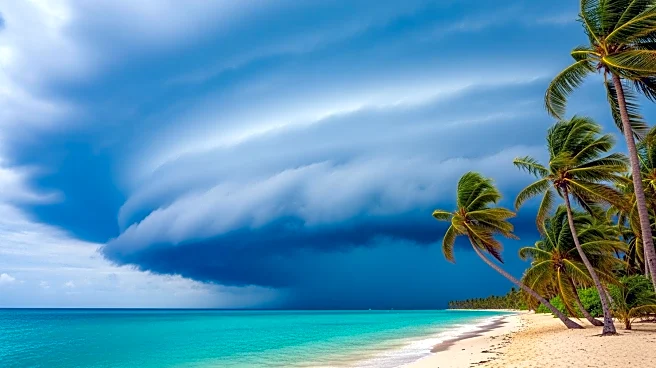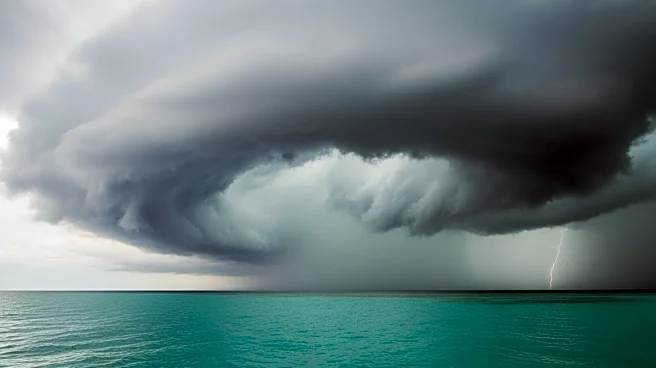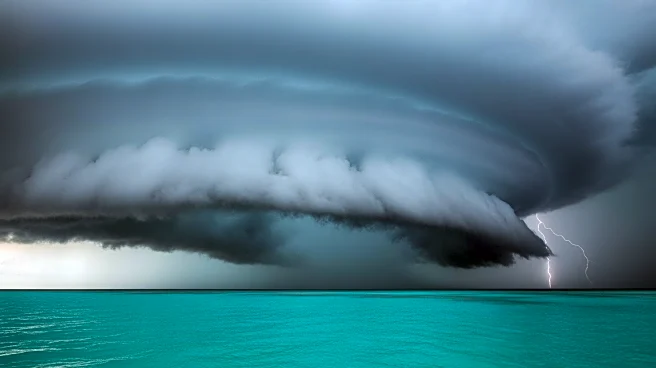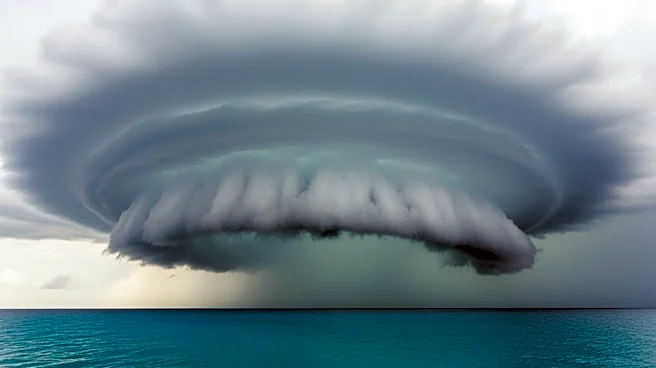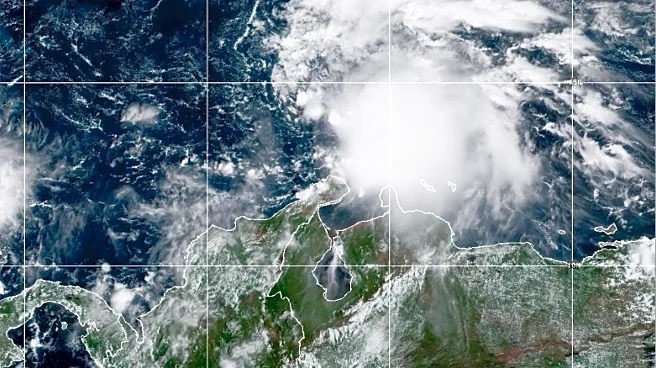What's Happening?
Tropical Storm Melissa is currently moving through the Caribbean Sea, posing a significant threat of flooding and mudslides across the region. The storm is expected to slow down and turn northwest towards
Jamaica and Haiti's southwestern peninsula, potentially strengthening into a hurricane by the end of the week. Heavy rainfall is forecasted, with 5 to 10 inches expected across southern Haiti and the Dominican Republic through Friday. This amount of rain over the mountainous terrain could lead to catastrophic flash flooding and landslides. Melissa is currently located about 300 miles south of Haiti, with maximum sustained winds of 50 mph. The storm is moving over warm waters, which could fuel its intensification into a hurricane by Saturday. A hurricane watch has been issued for parts of Haiti, and a tropical storm watch is in effect for Jamaica.
Why It's Important?
The development of Tropical Storm Melissa into a hurricane could have severe consequences for the Caribbean region, particularly Haiti and the Dominican Republic, which are vulnerable to flooding and landslides due to their mountainous terrain. The potential for rapid intensification of the storm is heightened by the warm waters, a phenomenon increasingly observed as global temperatures rise. This situation underscores the ongoing challenges posed by climate change, as warmer oceans contribute to more intense and frequent storms. The impact on the Caribbean could be devastating, with significant risks to life and property, and potential disruptions to local economies and infrastructure.
What's Next?
Forecasters are monitoring two main scenarios for Melissa's path. The storm could turn north and strengthen into a Category 1 hurricane, impacting Hispaniola over the weekend. Alternatively, Melissa might continue westward towards Central America, potentially affecting Nicaragua or Honduras next week. The northern Caribbean could experience several days of wet and windy weather, regardless of the storm's exact path. While a direct hit on the mainland United States is unlikely, rough surf and rip currents along the East Coast are possible next week. As the storm develops, its track and strength will become clearer, with the Atlantic hurricane season officially ending on November 30.
Beyond the Headlines
The potential intensification of Tropical Storm Melissa highlights the broader implications of climate change on hurricane activity. The increasing frequency of rapid intensification events, as seen with previous storms this season, reflects the impact of warmer ocean temperatures. This trend poses significant challenges for disaster preparedness and response in vulnerable regions. Additionally, the economic and social impacts of such storms can be profound, affecting tourism, agriculture, and infrastructure in affected areas. The situation calls for enhanced climate resilience measures and international cooperation to address the growing threats posed by extreme weather events.
